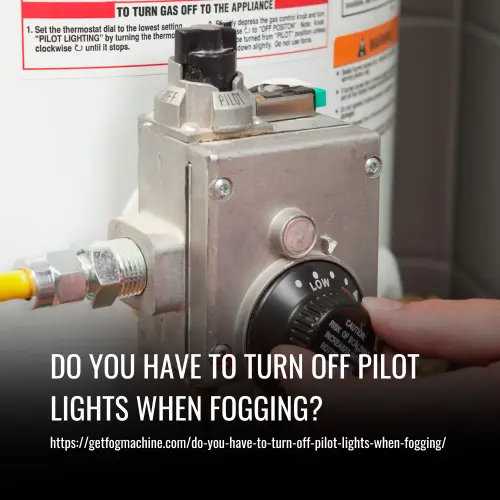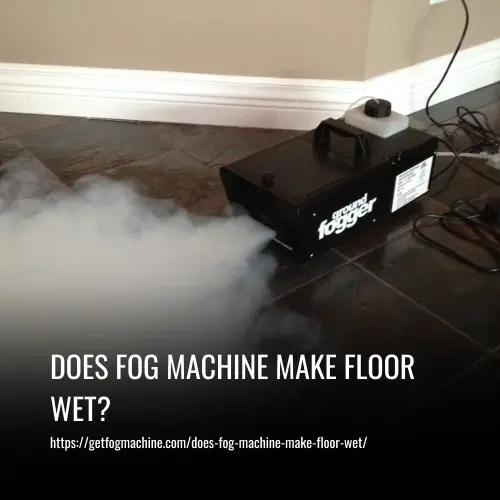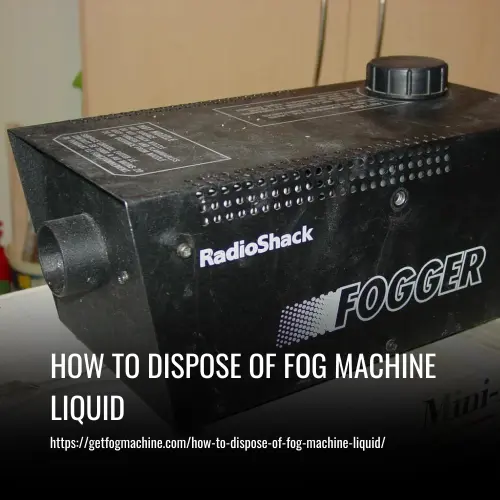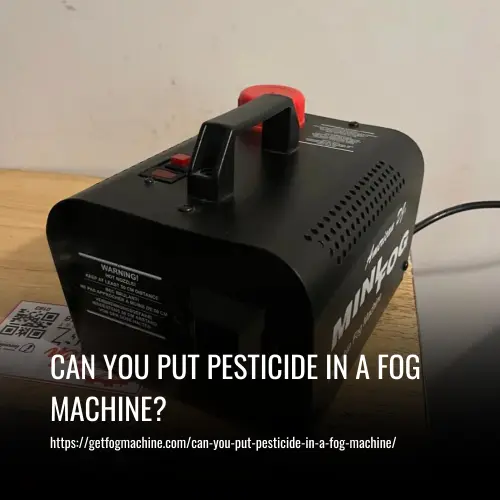Do You Have to Turn Off Pilot Lights When Fogging?
This post contains affiliate links. As an Amazon Associate, we earn from qualifying purchases.
Yes, you have to turn off pilot lights when fogging to ensure safety. Even if a specific electrical appliance isn’t in use, pilot lights can still ignite the flammable gases released by pesticide foggers.
Before starting the fogging process, it is important to double-check and turn off all pilot lights in your home to prevent any accidents or fires. Taking this extra precautionary step can help protect you, and your property, and minimize the potential risks associated with fogging.

Why Do You Have to Turn Off Pilot Lights When Fogging
Turning off pilot lights is crucial when fogging your home due to the highly flammable nature of pesticides. Pilot lights serve as ignition sources for gas appliances, such as water heaters, furnaces, and fireplaces. With pesticides being released as foggers are used, leaving pilot lights on can lead to explosions as the pesticides are ignited by the flame.
Despite being overlooked by many homeowners, turning off pilot lights is an essential safety measure to prevent damage to property and ensure the well-being of occupants. By following label directions and turning off pilot lights, you can minimize the risks associated with fogging and ensure a safe and effective pest control method.
What Happens When Pilot Lights Are On When Fogging
When pilot lights are left on during fogging, there is a potential risk of ignition and damage. Foggers are designed to release pesticides quickly and concentrate them in a room, creating a high concentration of the chemical. If the pesticide reaches a pilot light, it may ignite and cause an explosion, especially if multiple foggers are used.
It is crucial to turn off pilot lights and all other electrical appliances before fogging to ensure safety and prevent any accidents or damage. Always follow the label directions on the fogger and take extra precautions to minimize any potential risks.
How to Turn Off a Pilot Light
Gas appliances often have a pilot light, which is a small flame that is continuously burning to ignite the main burner when needed. It is important to turn off the pilot light before fogging or using insecticide products in order to prevent any potential accidents or damage to the appliance.
1. Gas Fireplaces and Furnaces
For gas fireplaces and furnaces, the pilot light is usually located at the thermostat or behind the access panel. Look for a switch or valve labeled as the pilot light control. Turn off the switch or close the valve to shut off the pilot light.
2. Gas Water Heaters
On gas water heaters, the pilot light is usually located near the power switches. Look for a control knob or switch labeled as the pilot light control. Turn off the knob or switch, or adjust it to the lowest temperature setting to extinguish the pilot light.
3. Gas Ovens
To turn off the pilot light on a gas oven, you will need to locate the gas intake valve at the back of the oven. Carefully pull the oven away from the wall to access the valve. Turn off the gas intake valve to extinguish the pilot light. Be cautious not to loosen the intake pipe to avoid a potential gas leak.
It is important to consult the manufacturer’s website or the user manual for your specific gas appliance to locate the pilot light control. Following the manufacturer’s instructions will ensure proper and safe handling of your pilot light when using fogging or insecticide products.
How to Safely Set Up Foggers When You Have Pilot Lights
When using foggers to eliminate pests in your home, it is crucial to take proper safety precautions, especially if you have pilot lights on your appliances. Pilot lights can pose a fire hazard if not handled correctly. Here are some steps to safely set up foggers when you have pilot lights:
1. Read and understand the manufacturer’s instructions
Before using any fogger, carefully read and follow the instructions provided on the label. If you have any questions or uncertainties, consult the manufacturer’s website or contact their customer support for clarification.
2. Calculate the right number of foggers
Determine the size of your home and use the recommended number of foggers accordingly. Using too few or too many foggers can affect the effectiveness of the treatment and potentially pose safety risks.
3. Turn off all pilot lights
Prior to activating the foggers, ensure to turn off all pilot lights in your home. This includes gas valves, pilot lights on appliances, and any other sources of open flames that could ignite the flammable aerosol propellants used in foggers.
4. Maintain a safe distance
Place the foggers at least 6 feet away from appliances with pilot lights to minimize the risk of any accidental fire. It’s always best to create an unobstructed space for safe fogger placement.
5. Clear obstacles
Remove any furniture or objects that might obstruct the distribution of the fog throughout the room. This will ensure better coverage and prevent any damage or undesired reactions.
6. Follow recommended evacuation time
After activating the foggers, follow the recommended period of time to evacuate the premises. This will allow the fog to disperse and settle without any direct contact with humans or animals.
7. Ventilate and clean after fogging
Once the recommended time has passed, open windows and doors to ventilate the area. Additionally, wipe down surfaces, air out the treated rooms, and consider using a detergent to remove any residual chemicals.
Taking these safety measures when using foggers with pilot lights in your home will help prevent accidents and ensure a safe and effective pest control process.
How Do You Determine Your Home Size Before Fogging
Determining the size of your home before fogging is crucial to ensure effective pest control. By following a few simple steps, you can accurately determine the cubic volume of your home and determine the appropriate number of fogging canisters needed.
1. Measure each room
Begin by measuring the length, width, and height of each room you want to fog. Use feet as the unit of measurement for accuracy.
2. Calculate the cubic volume
Multiply the length, width, and height of each room to obtain the cubic volume of that specific room. For example, if a room measures 10 feet long, 12 feet wide, and 8 feet high, the volume would be 960 cubic feet (10 x 12 x 8).
3. Add up the volumes
After obtaining the cubic volumes of each room, add them all together to determine the total cubic volume of your home.
4. Compare to manufacturer instructions
Check the instructions provided by the pesticide product manufacturer. They often recommend a specific ratio of fogger units per cubic foot. Most commonly, it is suggested to use one unit for every 1,000 cubic feet.
5. Determine the number of canisters needed
Divide the total cubic volume of your home by the recommended ratio provided by the manufacturer. This will give you the number of fogger canisters required for effective pest control.
It is important not to exceed the recommended amount of fogger units, as it can lead to overexposure to pesticides and potential health risks.
FAQs
Explosions during fogging can occur when there are a large number of pesticides present and an electrical appliance produces a spark. However, if the correct amount of foggers are used and pilot lights are turned off, the chances of explosions are highly unlikely.
The duration of the fogging process can vary depending on the manufacturer. Some recommend waiting for one hour, while others may suggest more time. It is important to follow the instructions provided by the manufacturer when using foggers in your home.
Yes, it is safe to do fogging with the pilot lights turned off. This significantly reduces the risk of fire when fogging your home. However, it is important to also follow other safety measures recommended by the manufacturer during the fogging process.
It is advisable to turn on the pilot lights after airing out your home following the fogging process. Open all windows to let fresh air in and consider using fans to expedite the process. Ensure that all aerosol residue has dissipated before turning on the pilot lights. Be patient and follow the recommended after-care instructions provided.
Conclusion
When it comes to fogging and pilot lights, it’s always better to be safe than sorry. While it may seem like a hassle to turn off your pilot lights, it’s a small inconvenience compared to the potential dangers of leaving them on.
So, the next time you’re fogging your house, take a few extra minutes to ensure the safety of your home and loved ones by turning off those pilot lights. It’s a simple step that can make a big difference. Stay safe!






